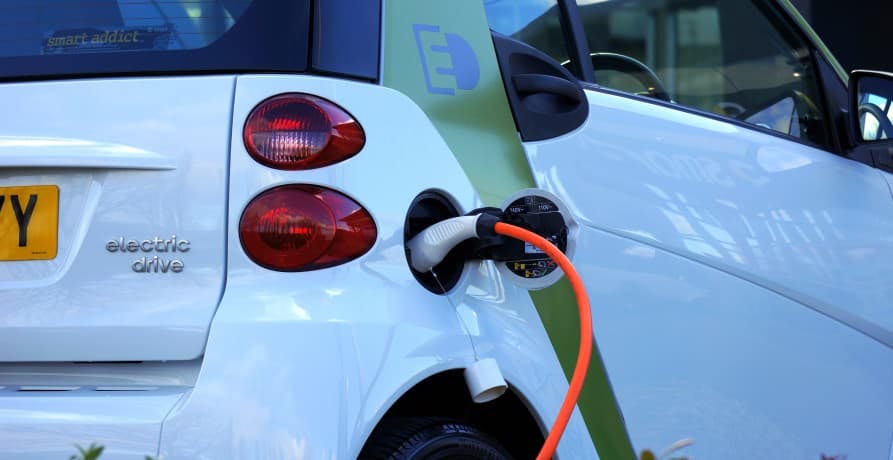ESG / CSR
Industries
All you need to know on Clean Energy Tax Credits



Businesses have more of an upper hand to fight against climate change than they realize, and with so many different ways to approach greater sustainability and reduce emissions – the benefits of clean energy tax credits can often be overlooked.
Clean energy tax credits are slowly garnering more attention after the wide-spread implementation of their use following the Inflation Reduction Act of 2022 being passed late last year. If businesses are methodical about the use and implementation of their clean energy systems, they can receive clean energy tax credits and experience multiple benefits for their company while helping the planet.
What are clean energy tax credits, and how can they help to promote sustainability and the use of clean energy?
What are clean energy tax credits?
Clean energy tax credits are financial incentives implemented by the government in order to entourage the use of renewable energy sources. Clean energy tax credits are garnered towards both individuals and businesses alike to facilitate the transition to the use of clean energy technologies, motivate companies to reduce greenhouse gas emissions, and stray away from the use of finite resources polluting our planet such as fossil fuels. Through the use of clean energy tax credits, governments aim to make the use of clean energy more economically feasible, and also encourage the transition to a clean energy economy to pave the way for a more sustainable future.
There are multiple kinds of clean energy tax credits, but they depend on the country a company or individual is located in. Two examples of clean energy tax credits include the Investment Tax Credit (ITC) and Production Tax Credit (PTC).
The Investment Tax Credit, or ITC, is a clean energy tax credit that provides a reduction in taxes for those who opt to install renewable energy systems: such as solar panels or wind turbines. This type of clean energy tax credit is usually for residential and commercial purposes.
The Production Tax Credit, or PTC, is a more specific kind of clean energy tax – as it refers to the electricity generated from clean energy sources, most commonly from wind turbines. Clean energy tax credits are provided based on how many kilowatts of renewable energy are produced over a certain time frame.

When it comes to clean energy taxes, It's important to realize that the amount of clean energy tax credits to be granted is contingent on the availability and how well the eligibility criteria is met. In addition to this, clean energy tax credits cary depending on the country and region an individual or company is located in. Therefore, in order to get the most out of your potential clean energy tax credits – many individuals and businesses opt to seek the help of a professional clean energy tax advisor, or at bare minimum seek local consultations or renewable energy associations for more information during the process of requesting clean energy tax credits.
What are the benefits of tax credits?
On the surface, it may seem that implementing the use of energy efficiency or renewable energy sources may not be worth a company’s pretty penny – but it turns out that clean energy tax credits are well worth the effort.
There are multiple benefits to be had for those who opt to receive clean energy tax credits, one of the many being how it can financially benefit individuals and companies who choose to make use of them. This is because clean energy tax credits can help to finance clean energy programs, new clean energy technologies, and other renovations that will make use of renewable energy sources. If an individual or company can’t afford to pay out of pocket for new windows that could improve the insulation in their home or office, a clean energy tax credit could help them to finance it – and the environment will benefit at the same time. Clean energy tax credits can also help with installing more expensive renewable energy solutions: such as solar panels or wind turbines.
In addition to helping to finance expensive clean energy projects and solutions to reduce emissions, clean energy tax credits can help lead to long-term savings – as electricity or utility bills will be decreased as a result of seeking the use of renewable energy. Also, companies that invest in renewable energy projects could also see a lucrative return on their investment.
👉 Ultimately, clean energy tax credits can help to encourage the transition to a clean energy economy: as it can help to create new jobs and new technologies to be used.

Besides the economic benefits of clean energy tax credits, there are more benefits to be had – such as how clean energy tax credits can help to reduce overall greenhouse gas emissions by encouraging the use of renewable energy sources and allowing companies to be more autonomous. This is because if homeowners and businesses alike seek to use renewable energy sources to acquire clean energy tax credits, they will not suffer the same consequences as a blackout or electricity shortage as other people or companies will.
Clean energy tax credits also helped to fund the development and research of new clean energy technologies, both of which can both economically and environmentally benefit everyone in the world. Overall, clean energy tax credits are beneficial as they help to support sustainable development, encourage the use of renewable energy sources, and facilitate the transition to a low-carbon economy.
What are some examples of clean energy tax credit programs?
Besides Investment Tax Credit (ITC) and Production Tax Credit (PTC), there are more options for clean energy tax credit programs available that could be better suited for varied or specialized individuals and businesses.
Here are some examples of additional clean energy tax credit programs:
Energy-Efficient Home Tax Credit
This clean energy tax credit is most relevant to homeowners who have made home improvements that involve the installation of energy efficient appliances or construction. Examples can include improving the insulation in the home so that less air conditioning or heating is necessary, replacing the window, or changing the A/C or heating system itself. This clean energy tax credit attempts to persuade home renovators to make the switch to more energy efficient home appliances.
Electric Vehicle (EV) Tax Credit
Similar to the concept implemented in some of California’s recent climate legislation, some governments will offer clean energy tax credits to individuals and companies alike if they opt to purchase an electric vehicle. These clean energy tax credits will help to encourage customers to opt for electric cars over gasoline powered cars that pollute the planet.

Renewable Energy Production Incentives
This type of clean energy tax credit refers to producers who receive financial rewards for their production of clean energy – such as producers who generate clean electricity to be used on the supply grid (or a smart grid).
Inflation Reduction Act (IRA)
Most recently, the Inflation Reduction Act of 2022 is a prime example of a clean energy tax credit program. This is because this climate bill passed by the Biden administration set aside an overwhelming $369 billion dollars to help develop new clean energy projects in addition to encouraging Americans across the country to choose more energy efficient appliances or environmentally friendly vehicles by providing tax reductions. Examples of this in the Inflation Reduction Act are similar to the Energy-Efficient Home Tax Credit or the Electric Vehicle Tax Credit, as Americans who install solar panels or choose to purchase an electric car could qualify for a tax reduction.
In addition to these clean energy tax credits, the Inflation Reduction Act also developed new requirements for labor so that individuals and companies have the opportunity to receive even more clean energy tax credits, and also helped to extend multiple clean energy tax credits – such as energy efficient home improvements, advanced energy manufacturing investments, carbon sequestration (or carbon capture and storage), and even expanded the clean energy tax credits to be received for making commercial buildings more energy efficient.
How can your company maximize the use of clean energy tax credits?
When it comes to utilizing clean energy tax credits, it’s a good idea to start small and work your way up. In other words, your company shouldn’t use clean energy tax credits to finance something beyond your price range or that couldn’t be paid off in a reasonable amount of time. Don’t start out with using clean energy tax credits to finance a carbon capture and storage system, but using them to replace something like the windows or air conditioning in your office might be a good start.
Making sure your company gets the most out of their clean energy tax credits also means making sure that your business is up to date with all the documentation necessary to ensure that a clean energy tax credit claim can be made with ease. In other words, keep records of all receipts and payments for something that could later be used to acquire clean energy tax credits – so that the process isn’t a headache later trying to retrieve old documents. If this is too difficult to keep up with, seeking the help of a clean energy tax credit professional or consultant might be useful to ensure that your company receives all of the clean energy tax credits possible.
👉 There could be home or office renovations that you don’t realize are eligible for a clean energy tax credit!

How have clean energy tax credits helped the environment?
Seeing as clean energy tax credits help to incentivize people and businesses to choose the more environmentally friendly option, whether it be for home improvement or transportation – clean energy tax credits can result in reduced emissions and widespread advocating for protecting the environment and promoting sustainable measures.
Examples of this include big name companies you may not even be aware of that have made use of clean energy tax credits – such as Apple and Google. Apple has made use of clean energy tax credits to invest in solar panels and wind turbines to help run their data centers, offices, and even some of their stores. Google has also invested in several clean energy projects to help their company achieve their goal of operating on a global scale using 100% renewable energy. Other well-known companies that have made use of clean energy tax credits include Walmart, Microsoft, and Intel.
👉 Clean energy tax credits haven’t just helped to improve the environment, but the economy – as the growth of the clean energy sector will continue to create new jobs and stimulate the economy while going green at the same time.
Ultimately, clean energy tax credits can be beneficial for the environment, used as a tool to help mitigate the negative effects of climate change, and provide a wide-array of other benefits for businesses. Seeking to better understand how to use clean energy tax credits and other clean energy programs can help facilitate the change necessary to fight against climate change, and Greenly can help you to understand all of these options (including clean energy tax credits) and more.
What about Greenly?
If reading this article about clean energy taxes has made you interested in reducing your carbon emissions to further fight against climate change – Greenly can help you!
Managing your company's carbon emissions and figuring out how to use clean energy taxes in the midst of climate change can become difficult to manage, and the stress of tax season can make it even worse – but fear not. Greenly is here to help! Book a demo with one of our specialists today to see how we can help you get started in your climate journey.
Greenly can help you make an environmental change for the better, starting with a carbon footprint assessment to know how much carbon emissions your company produces.


